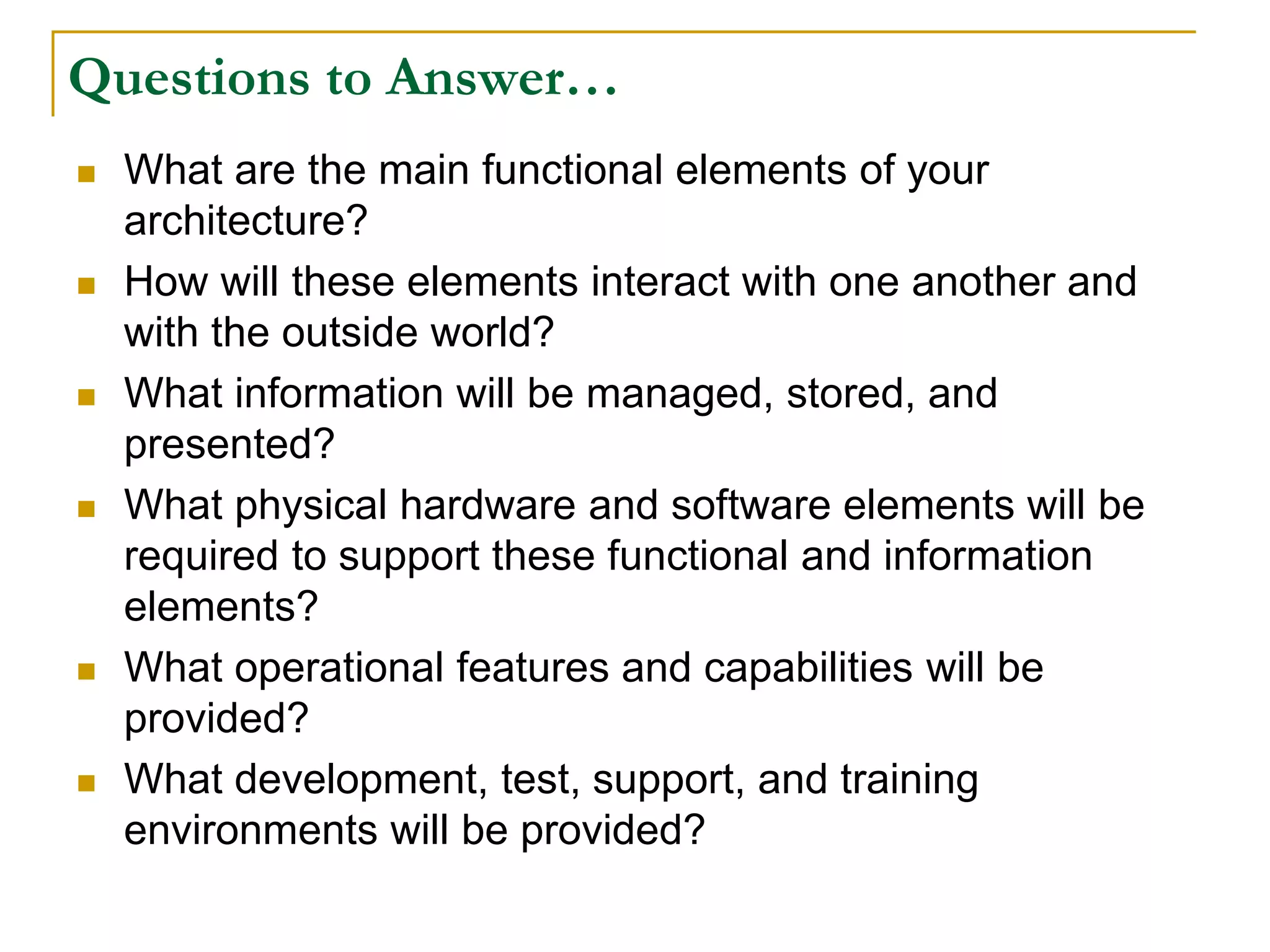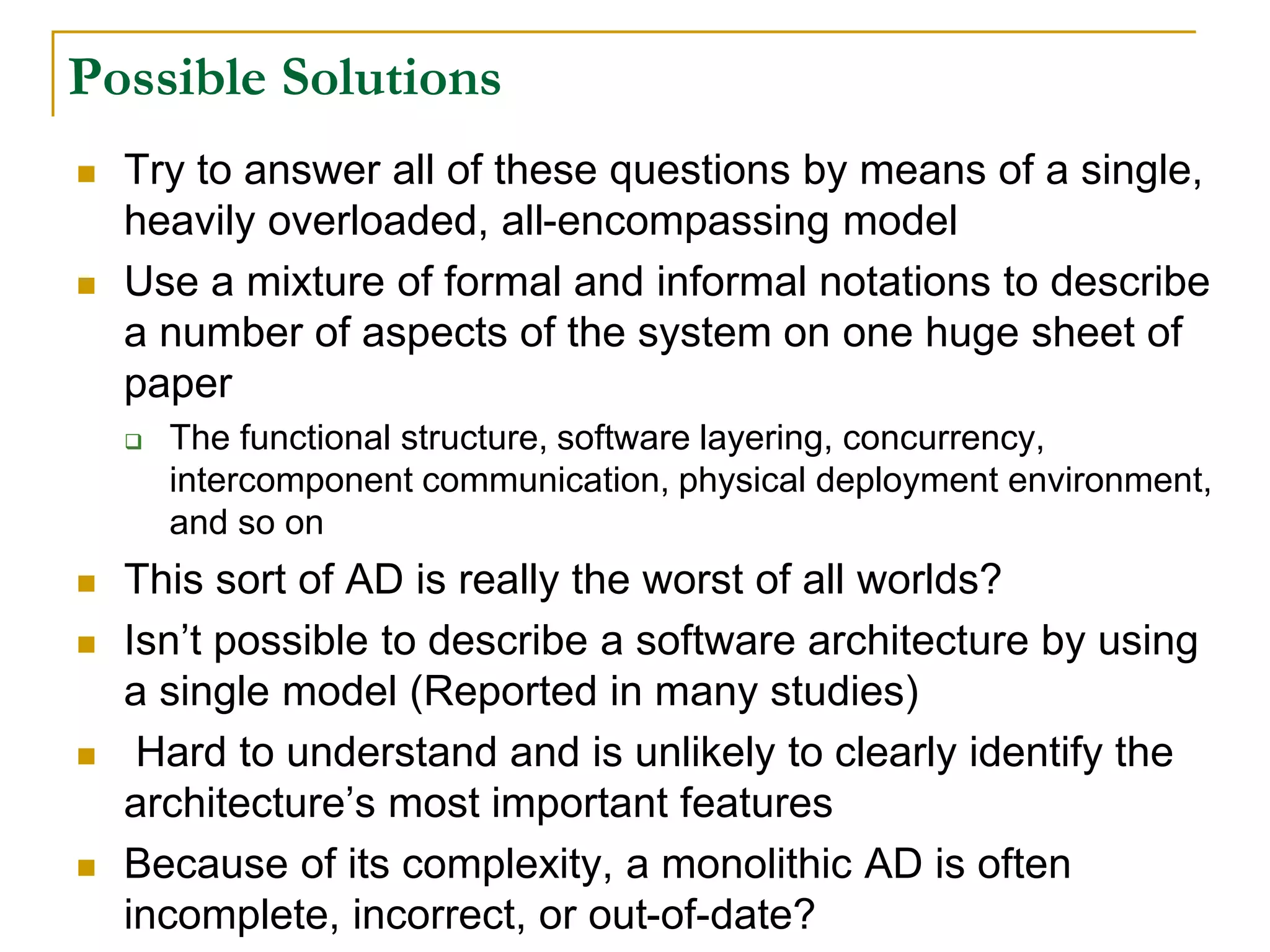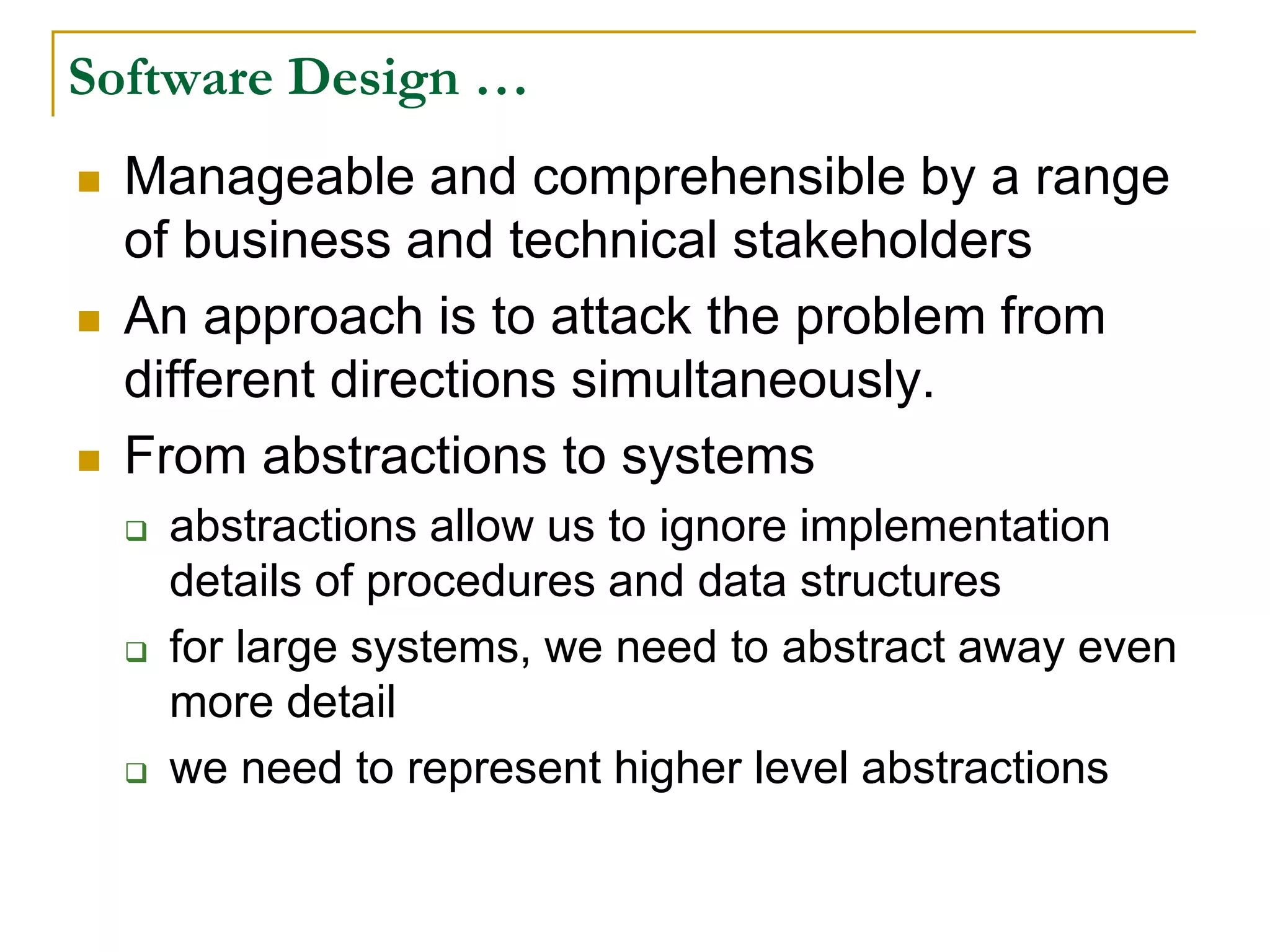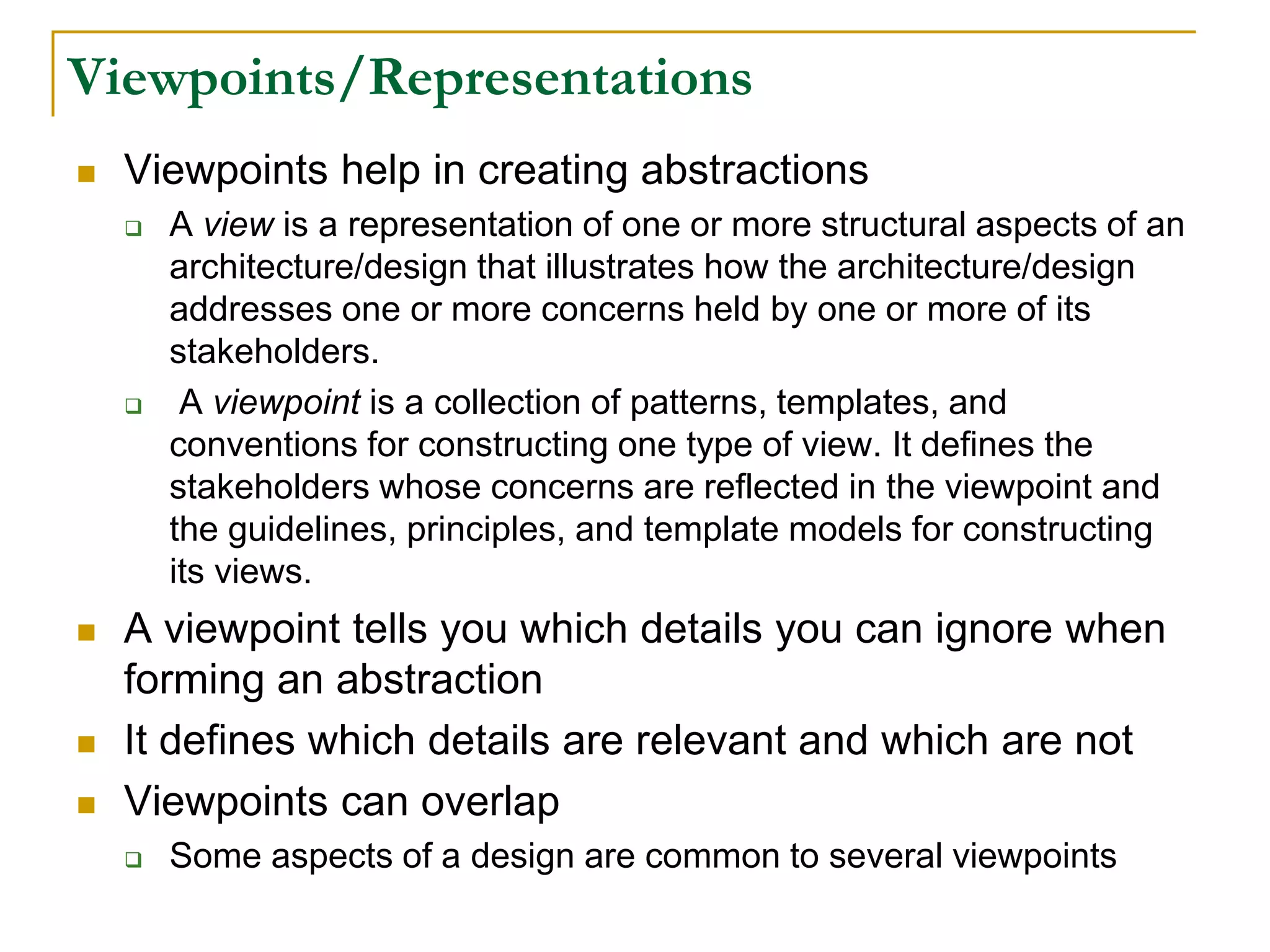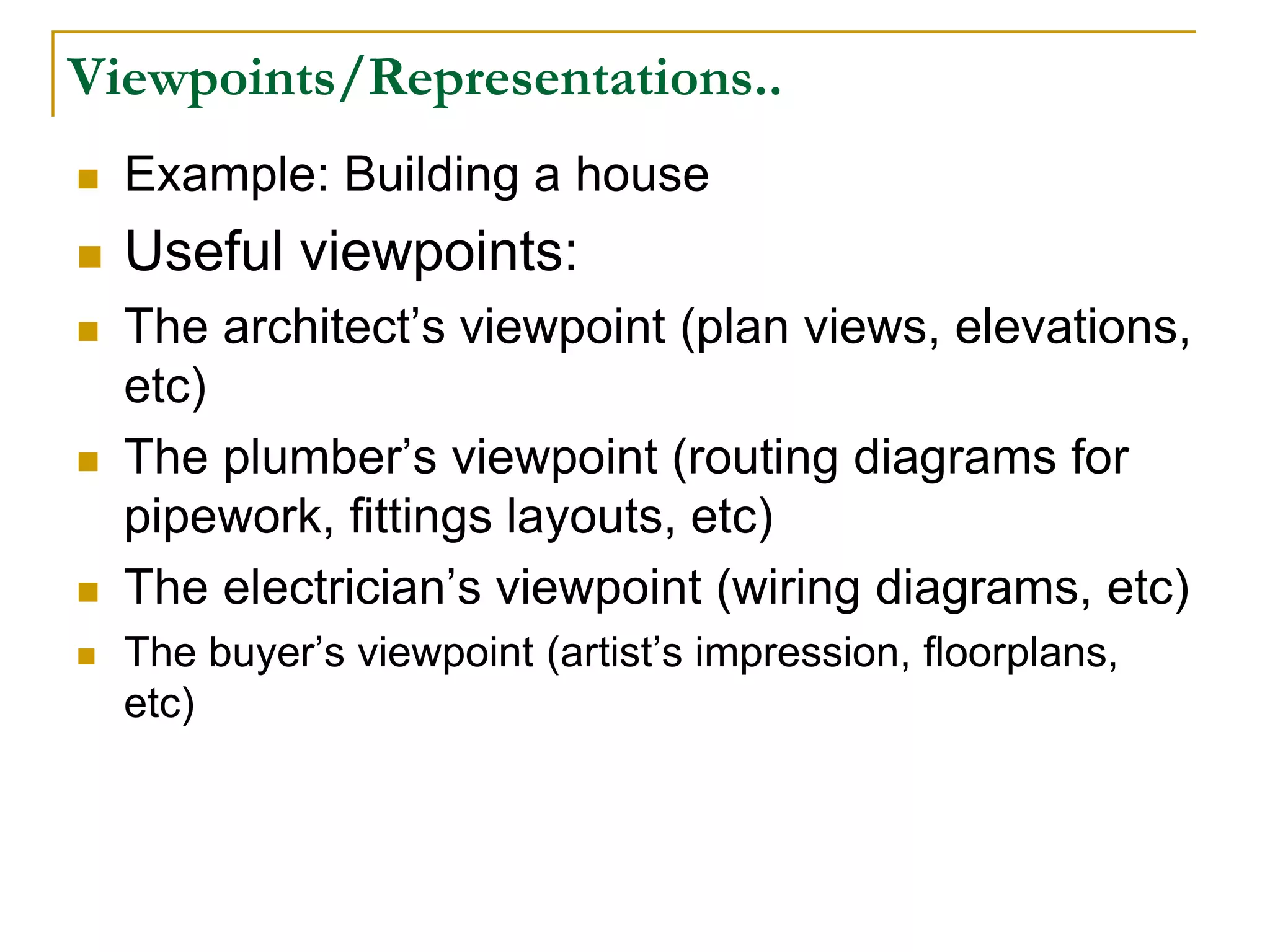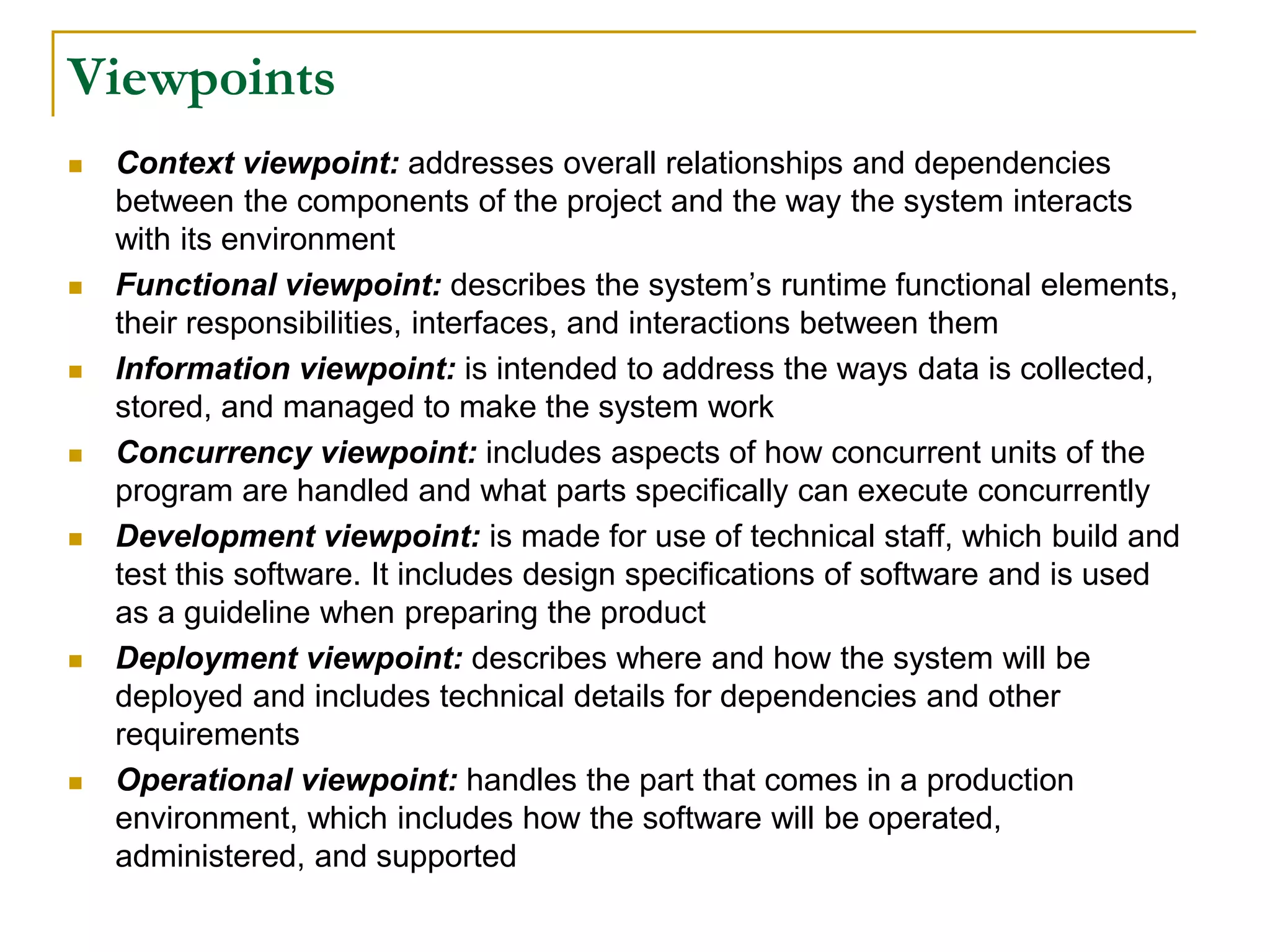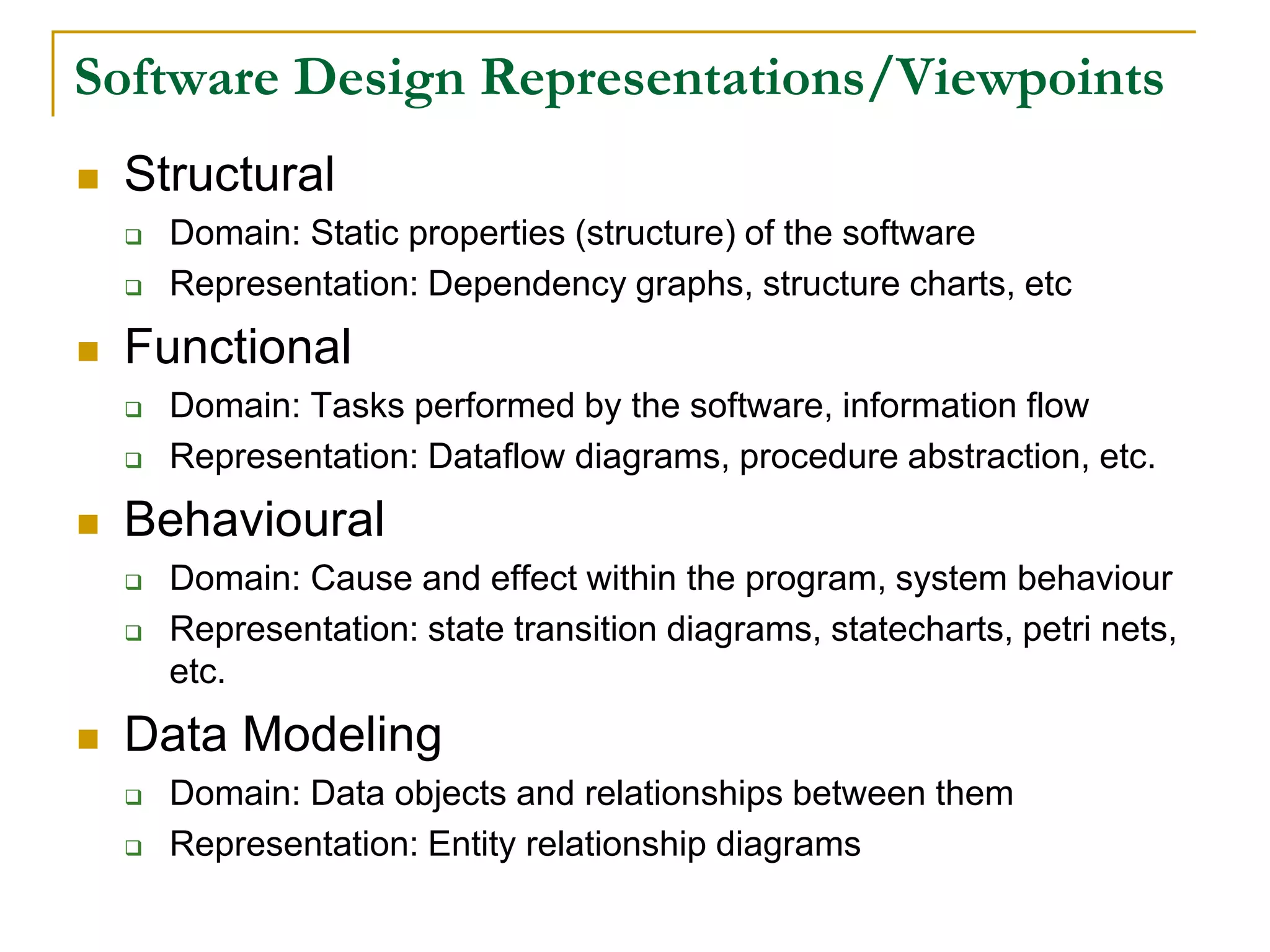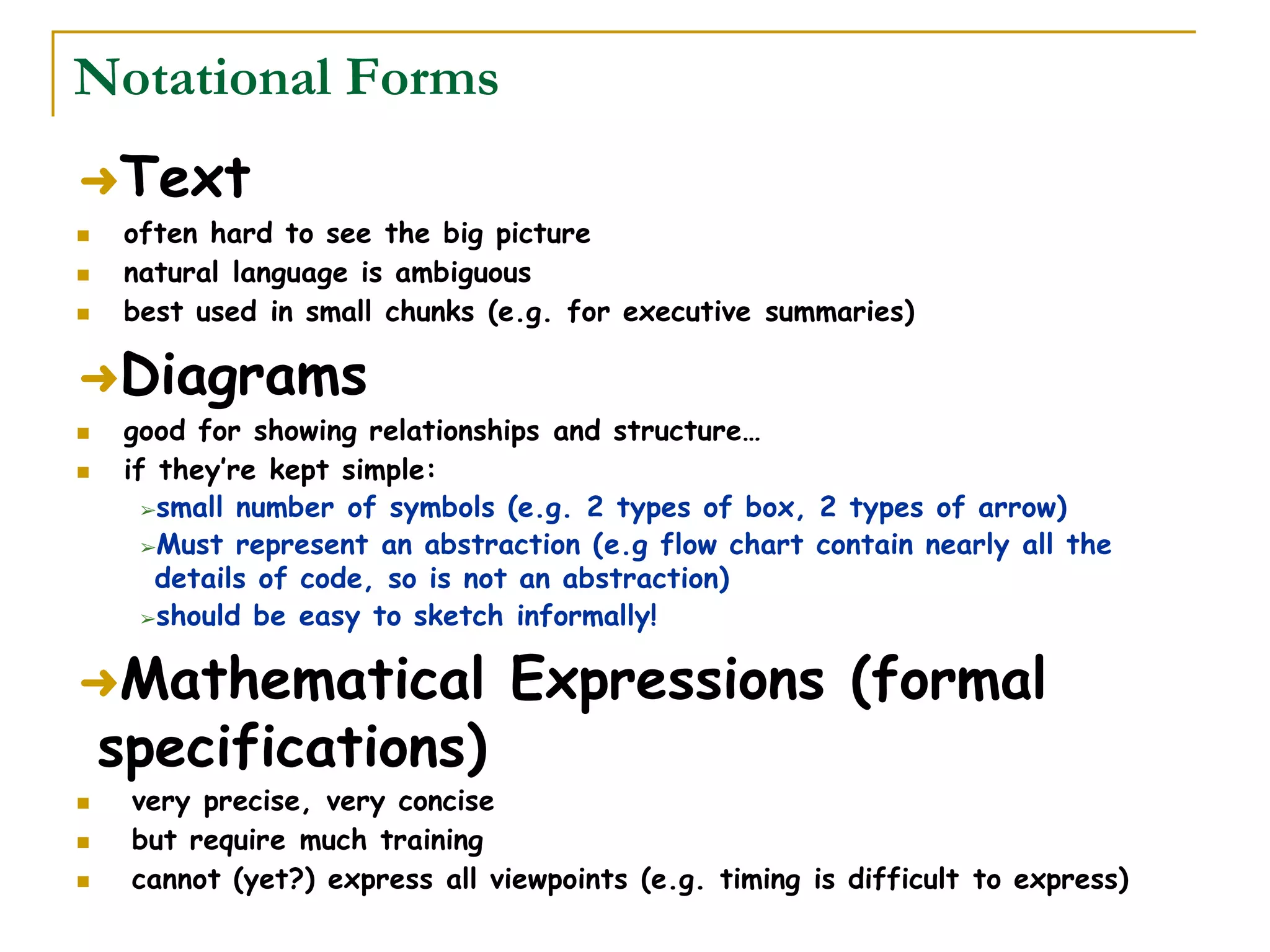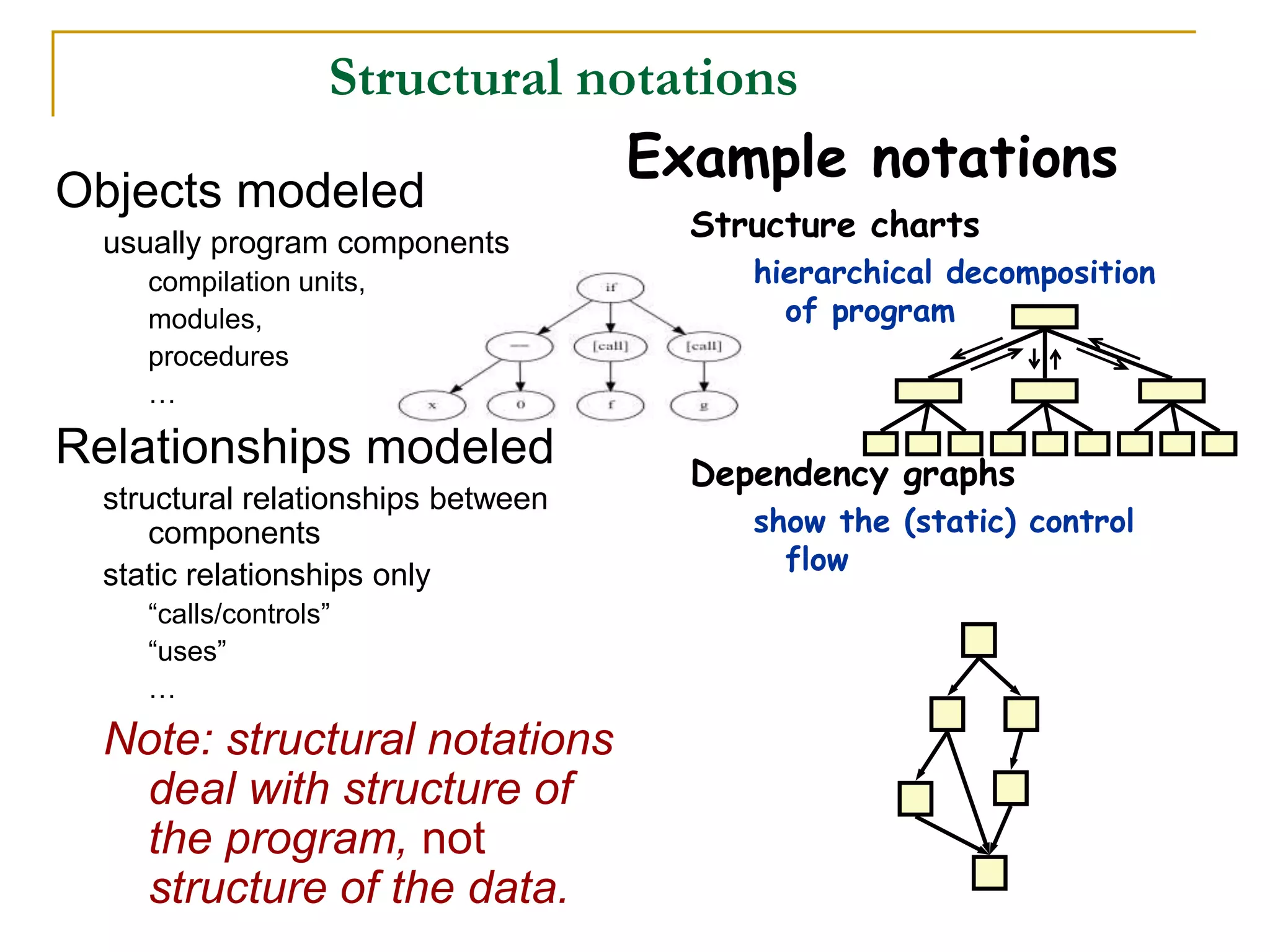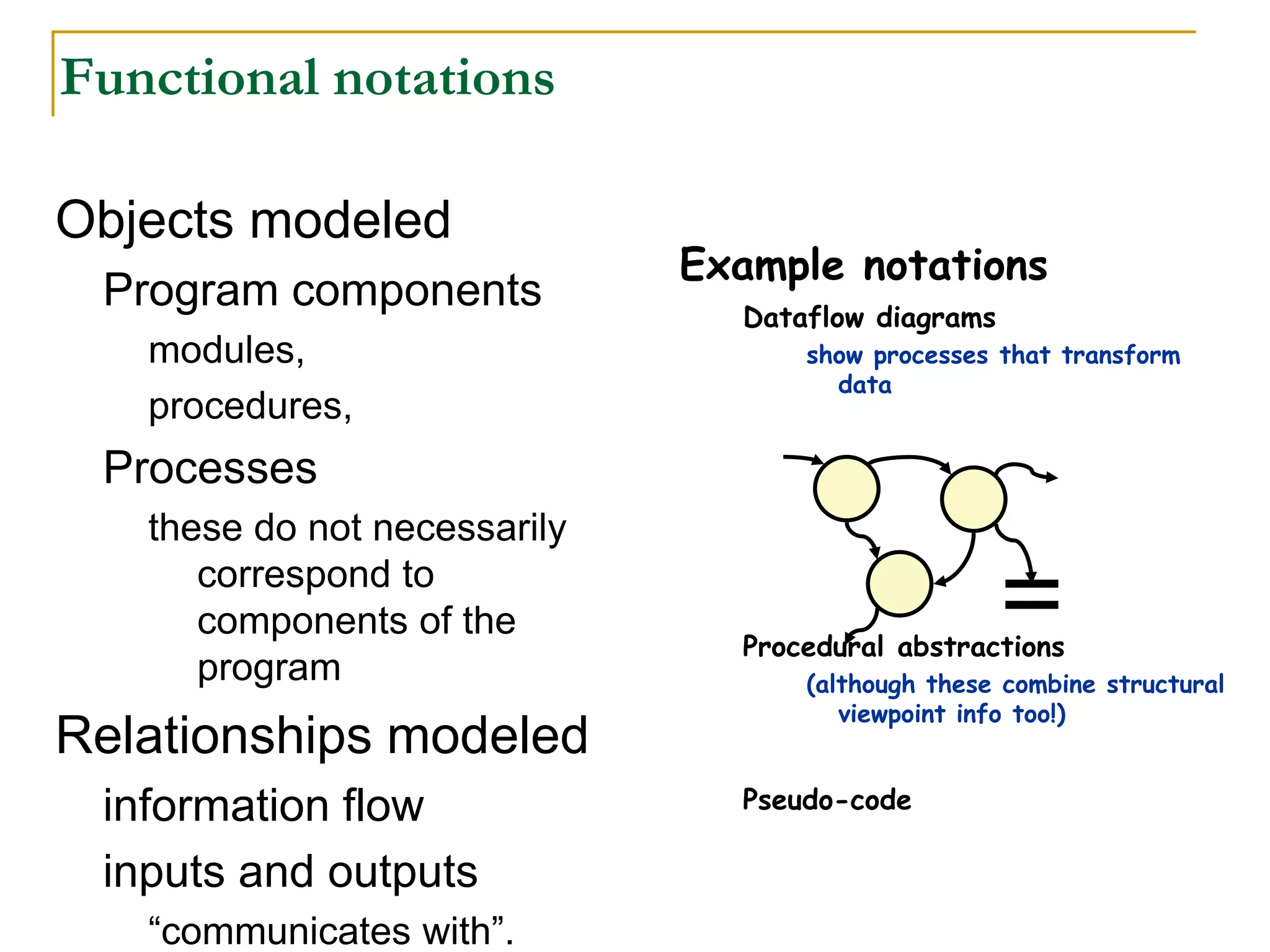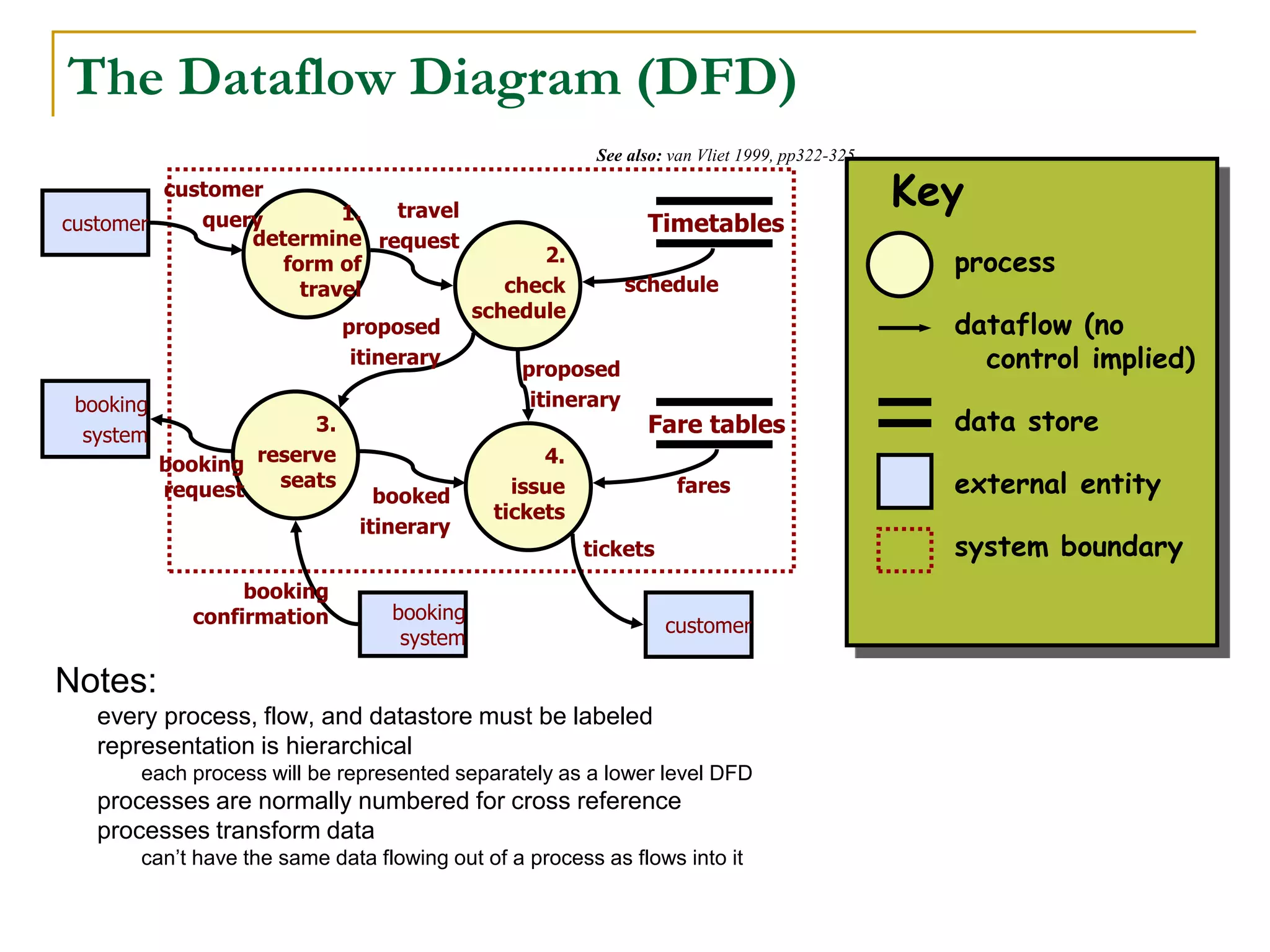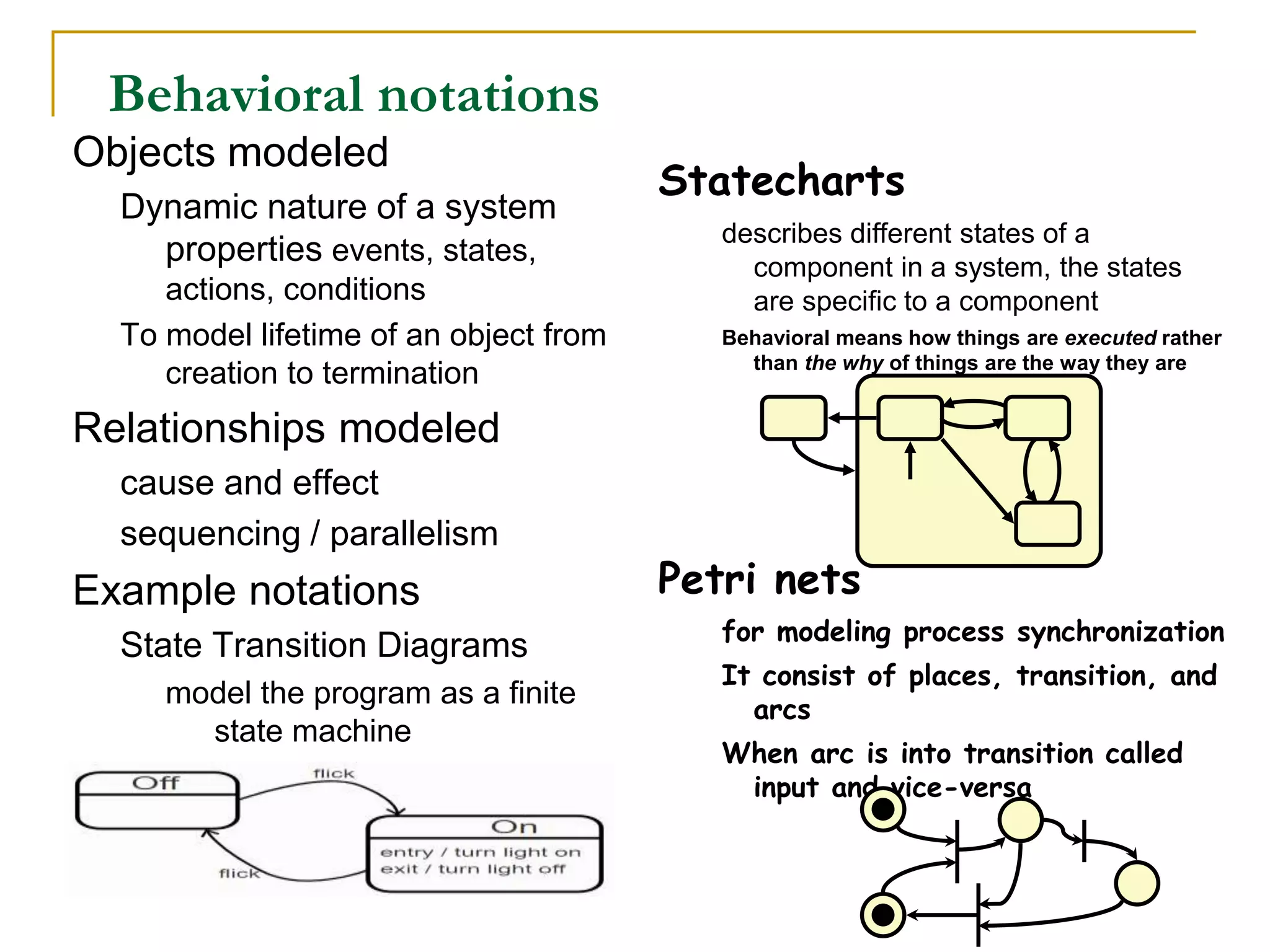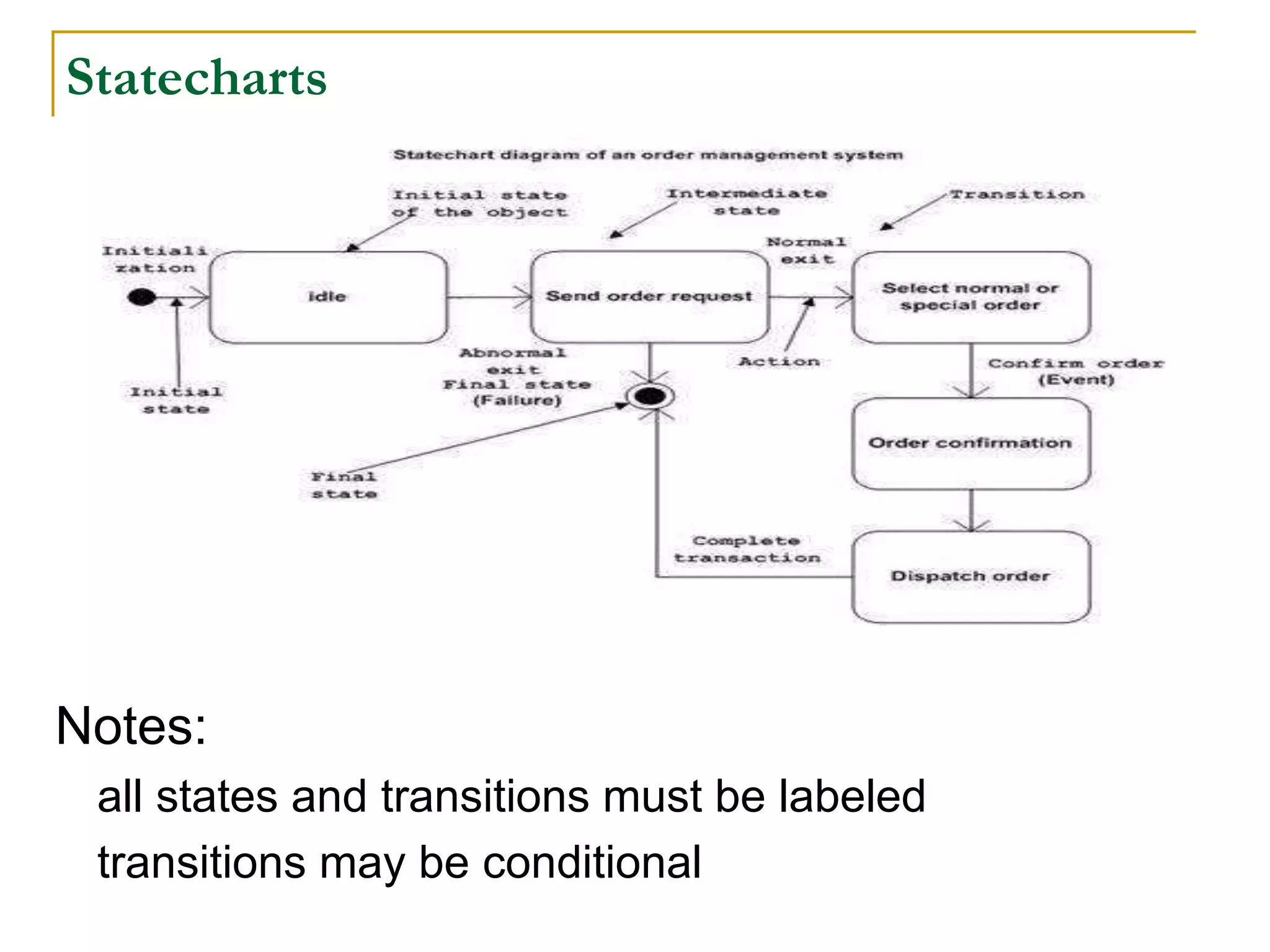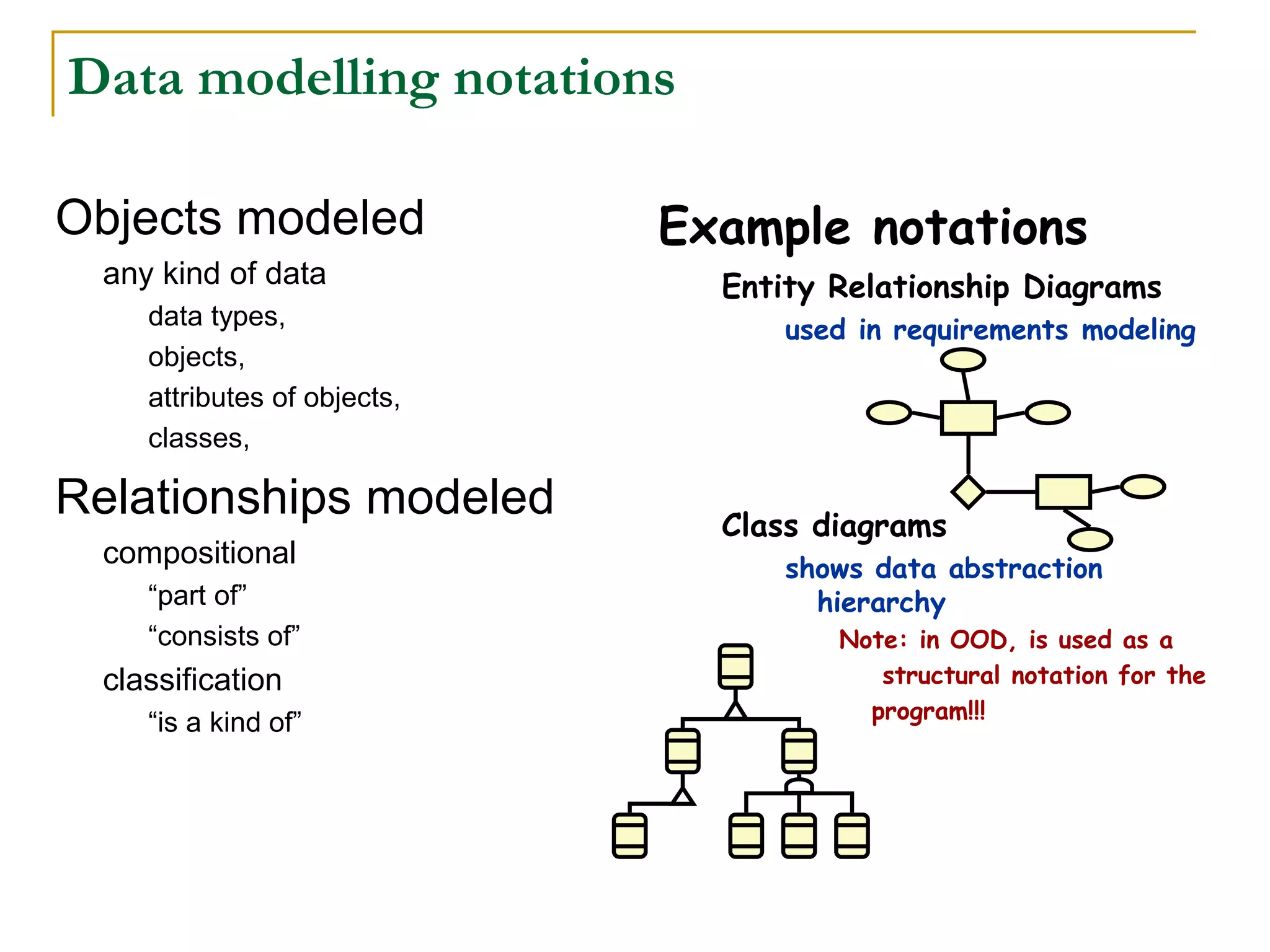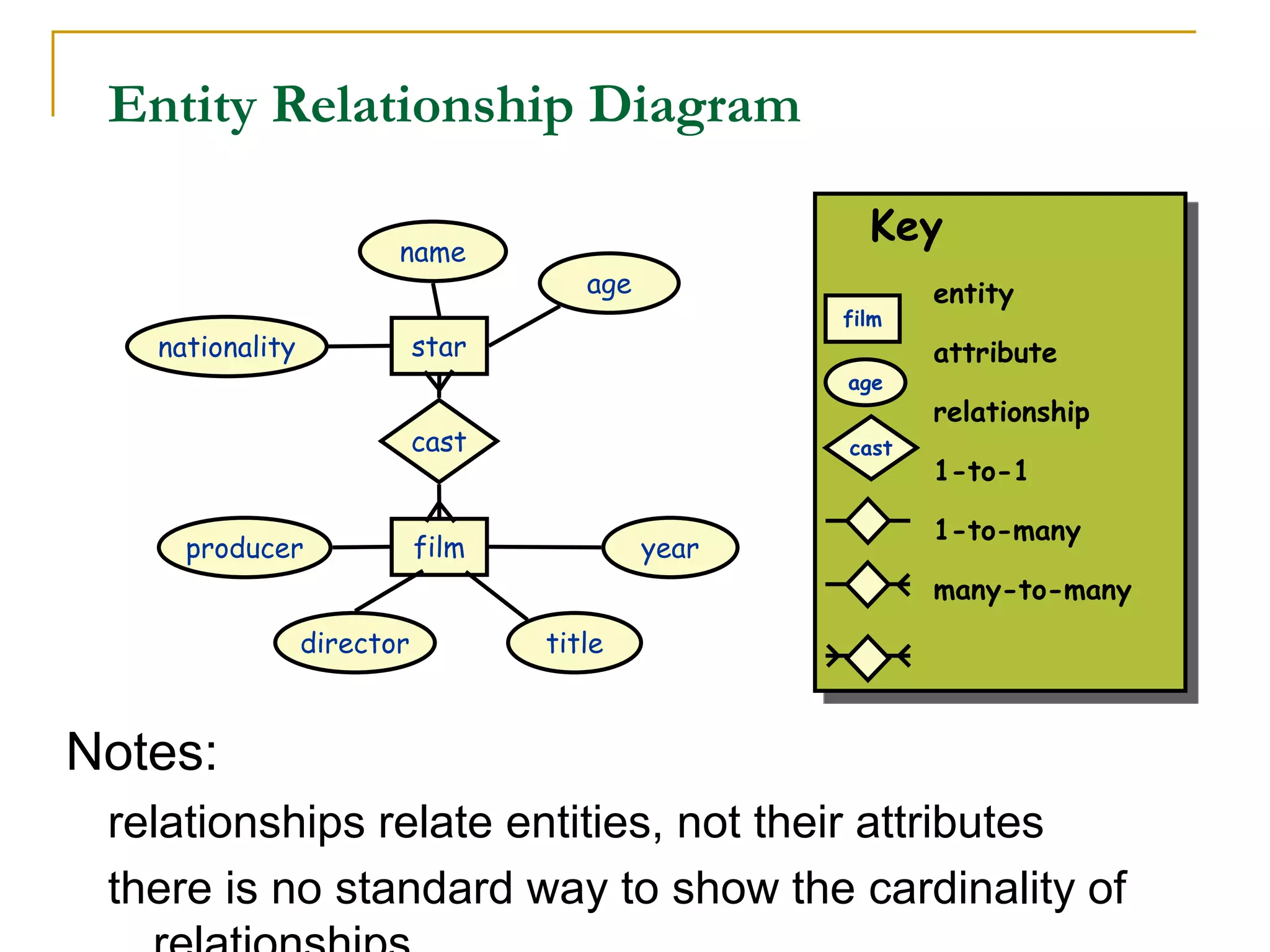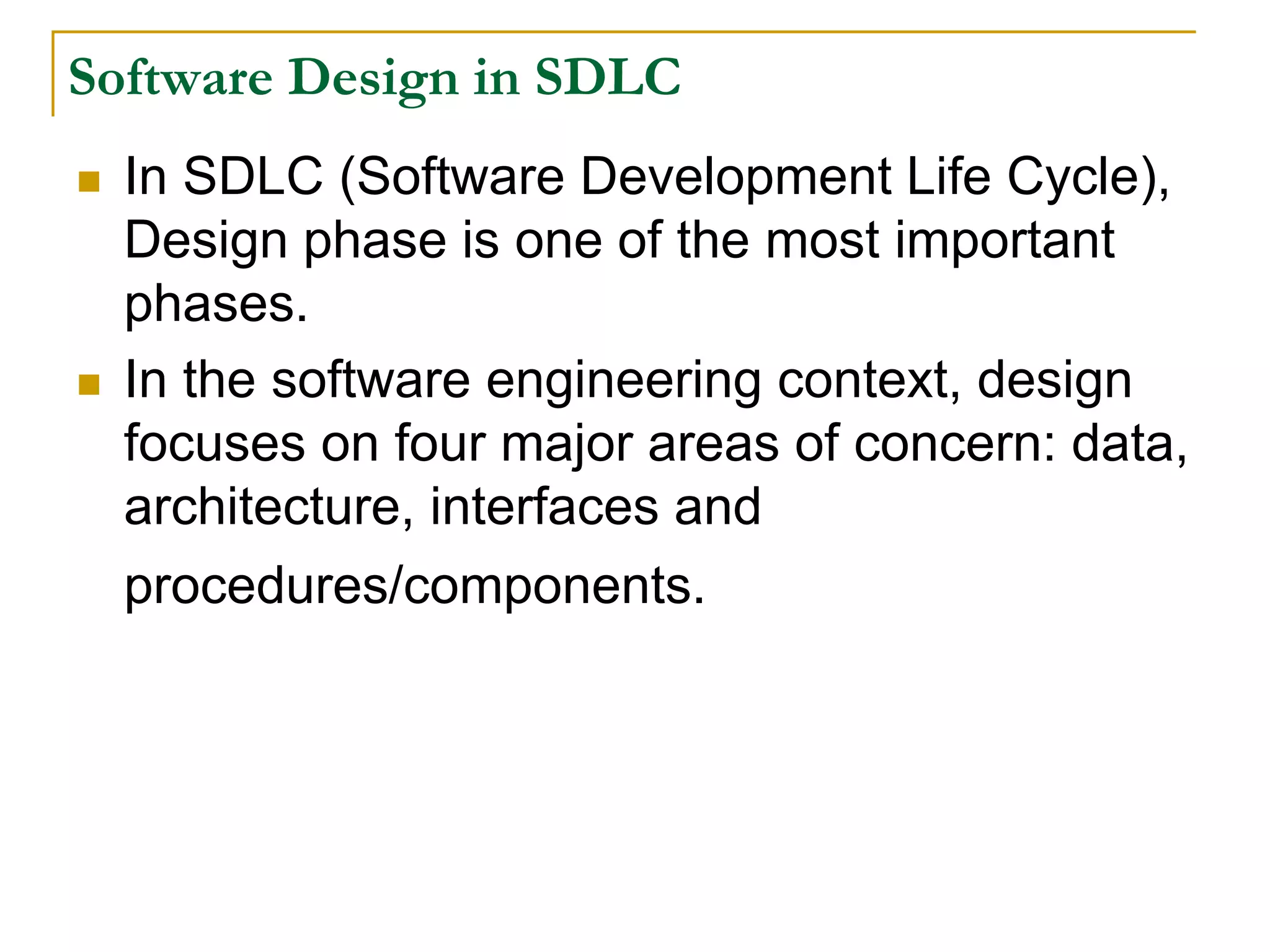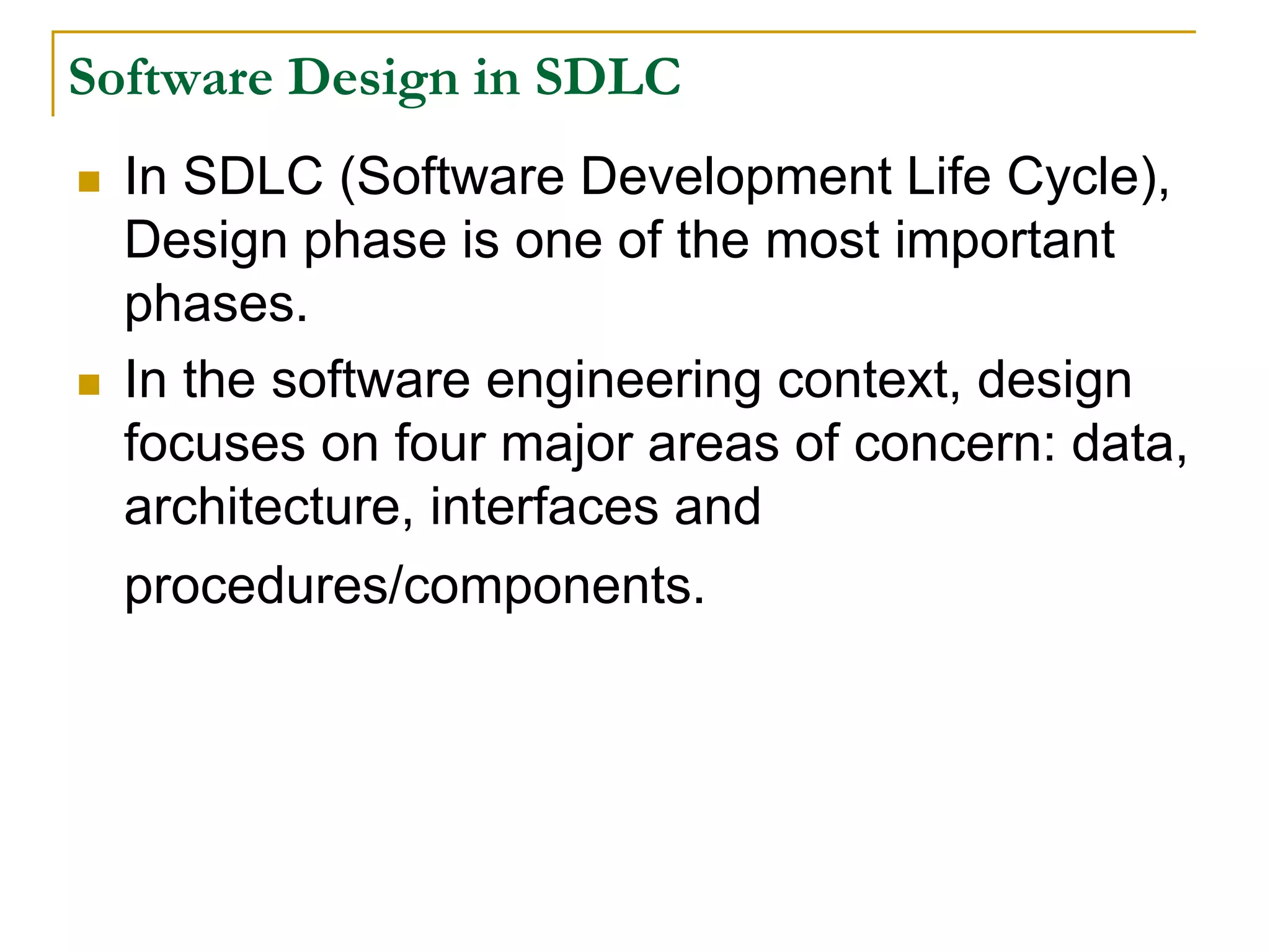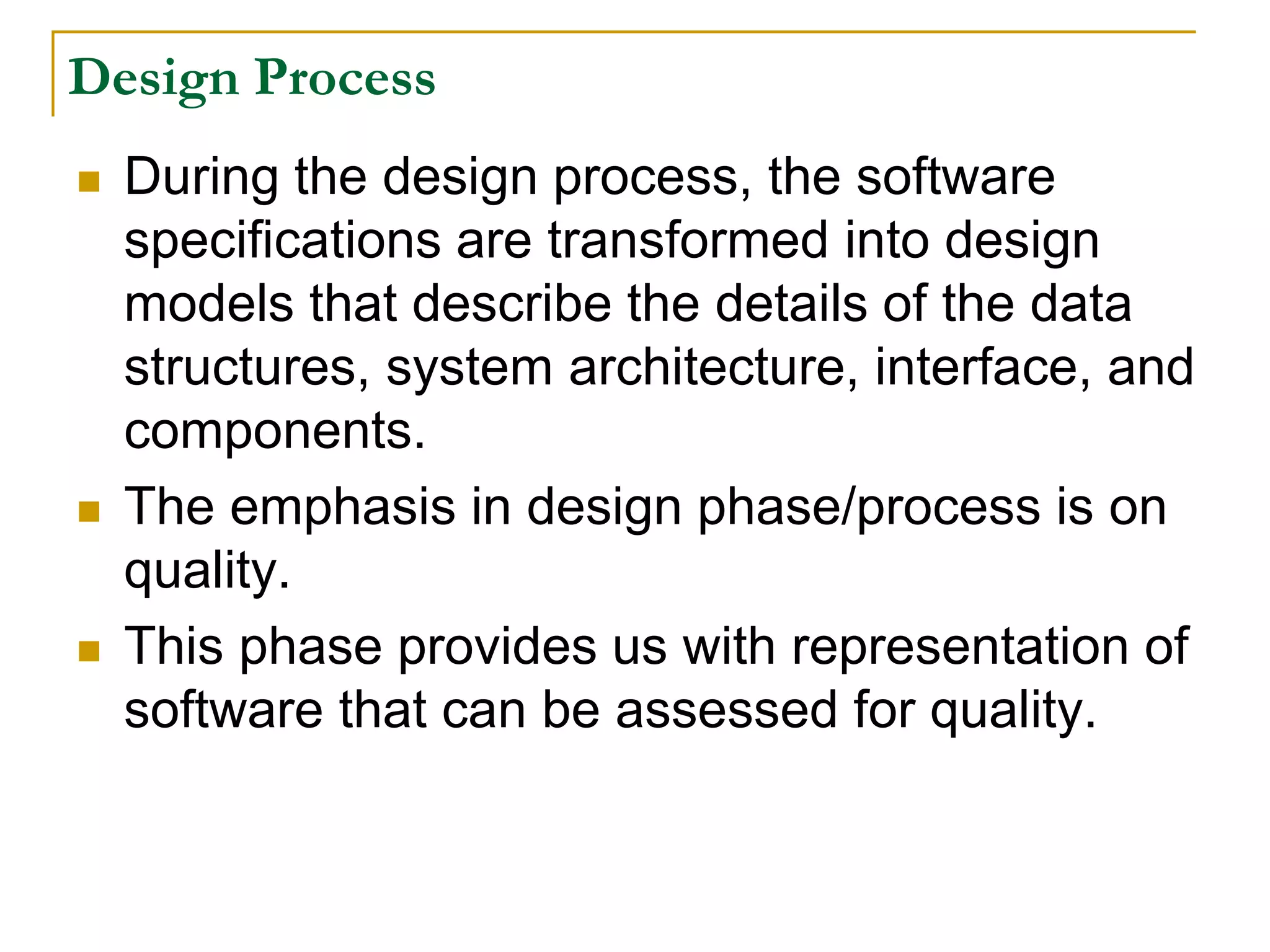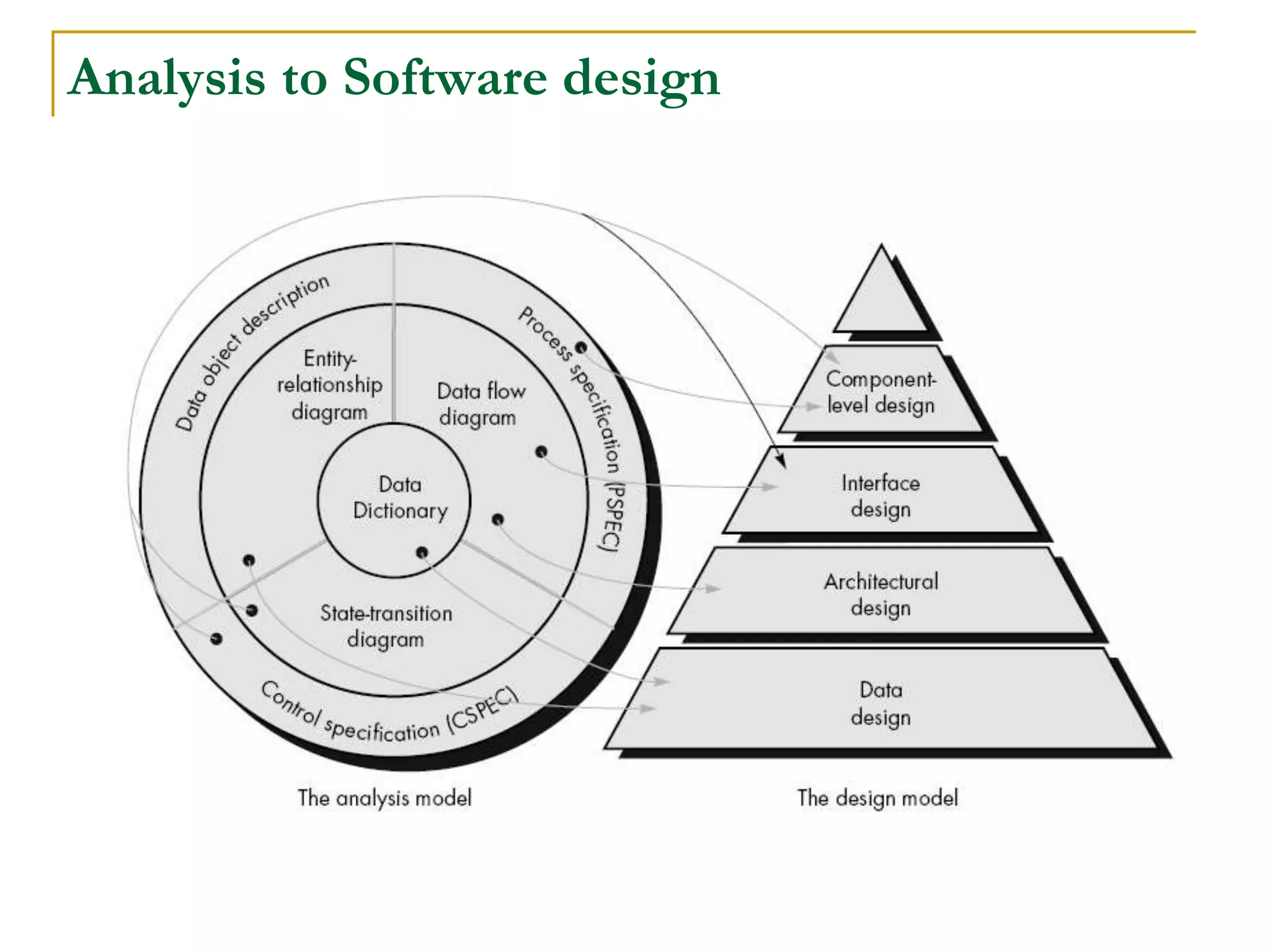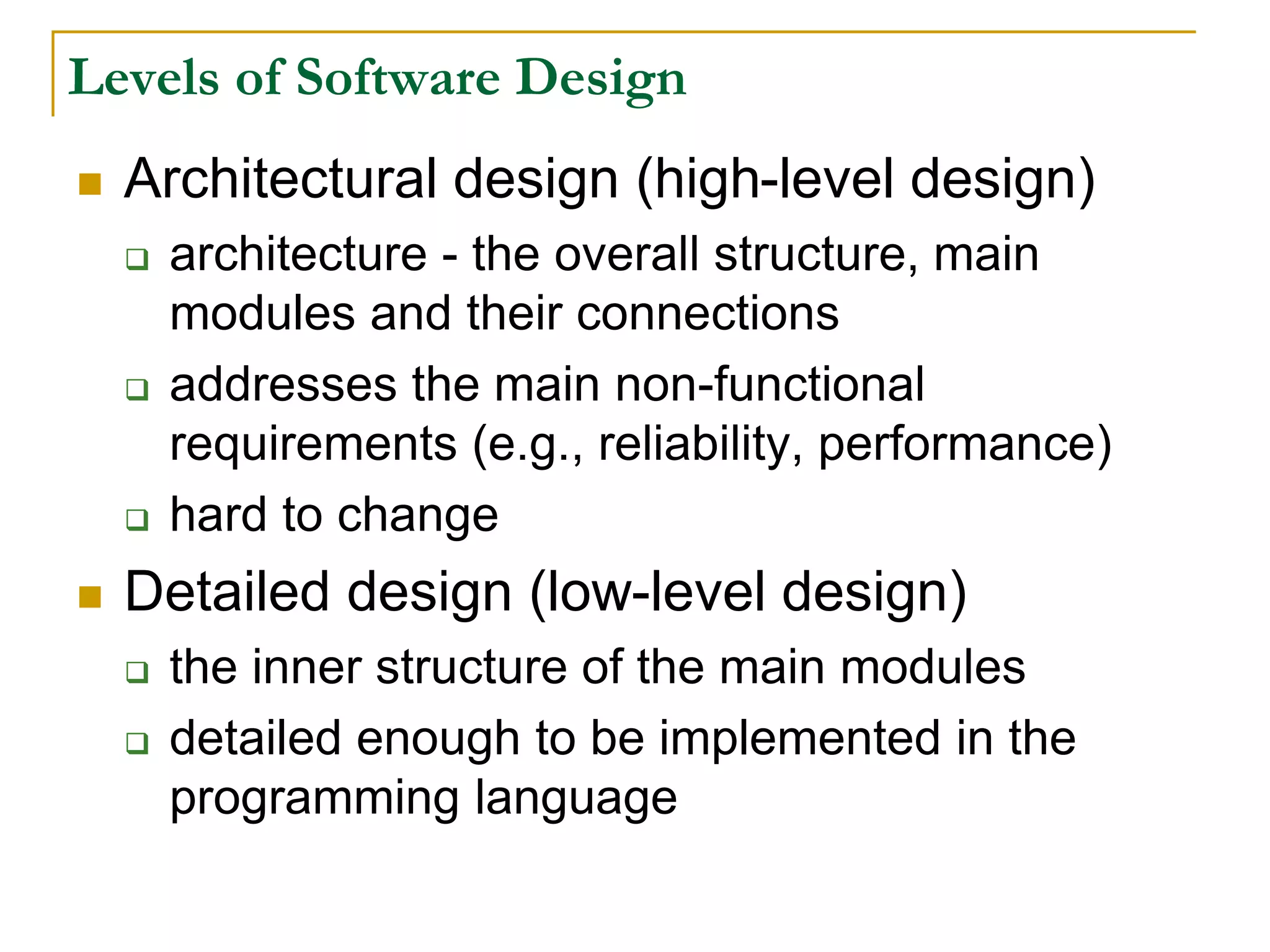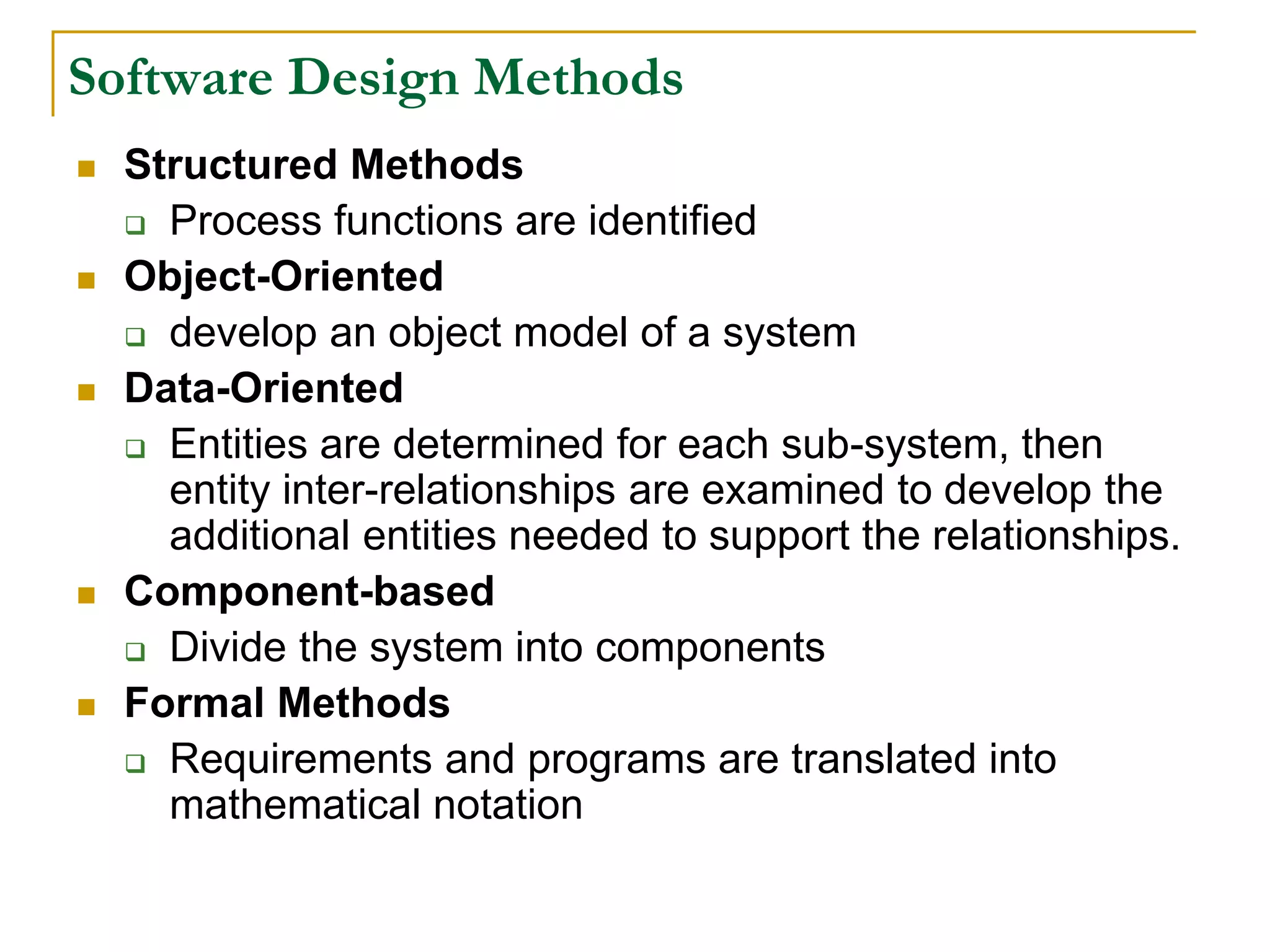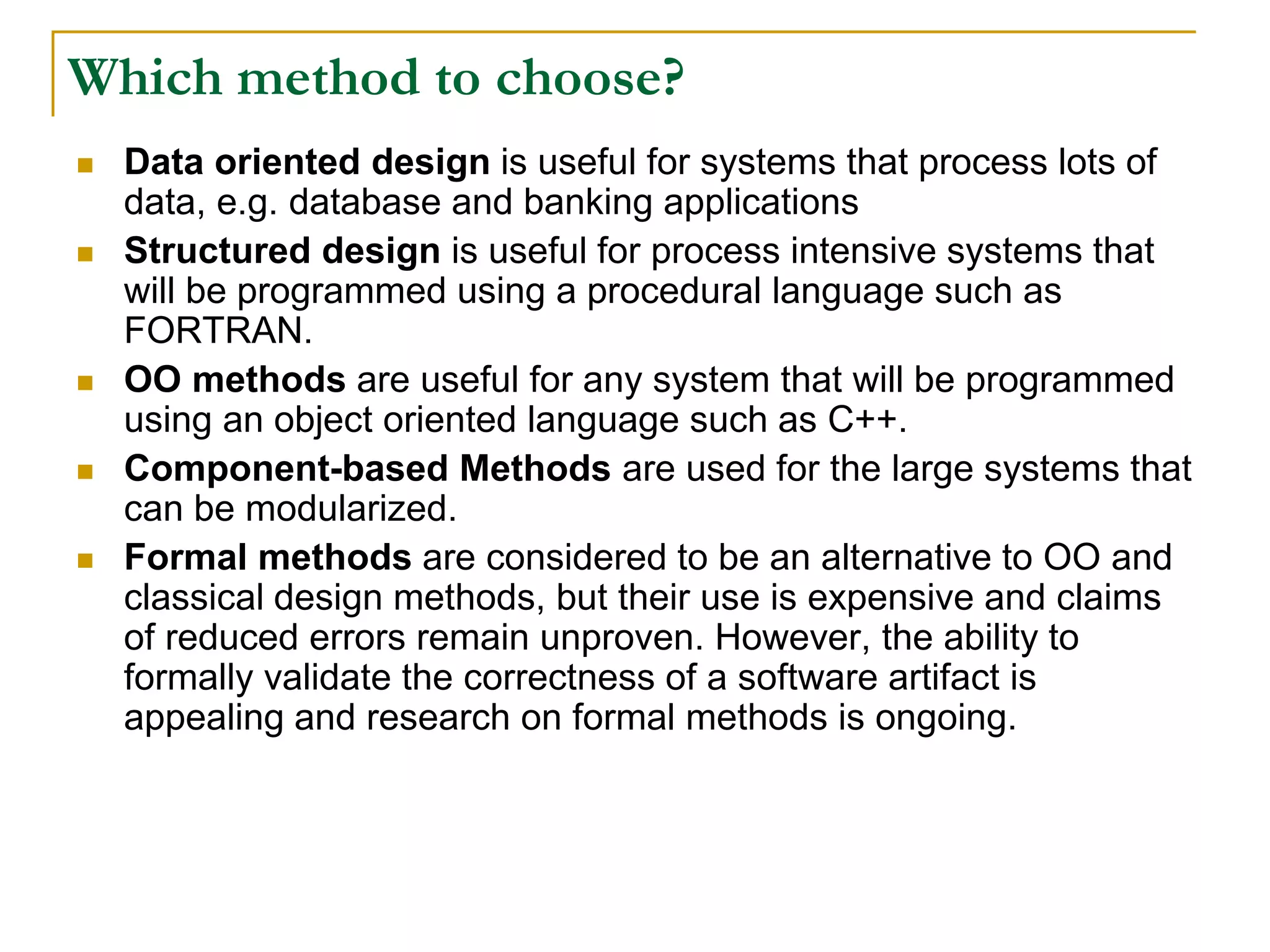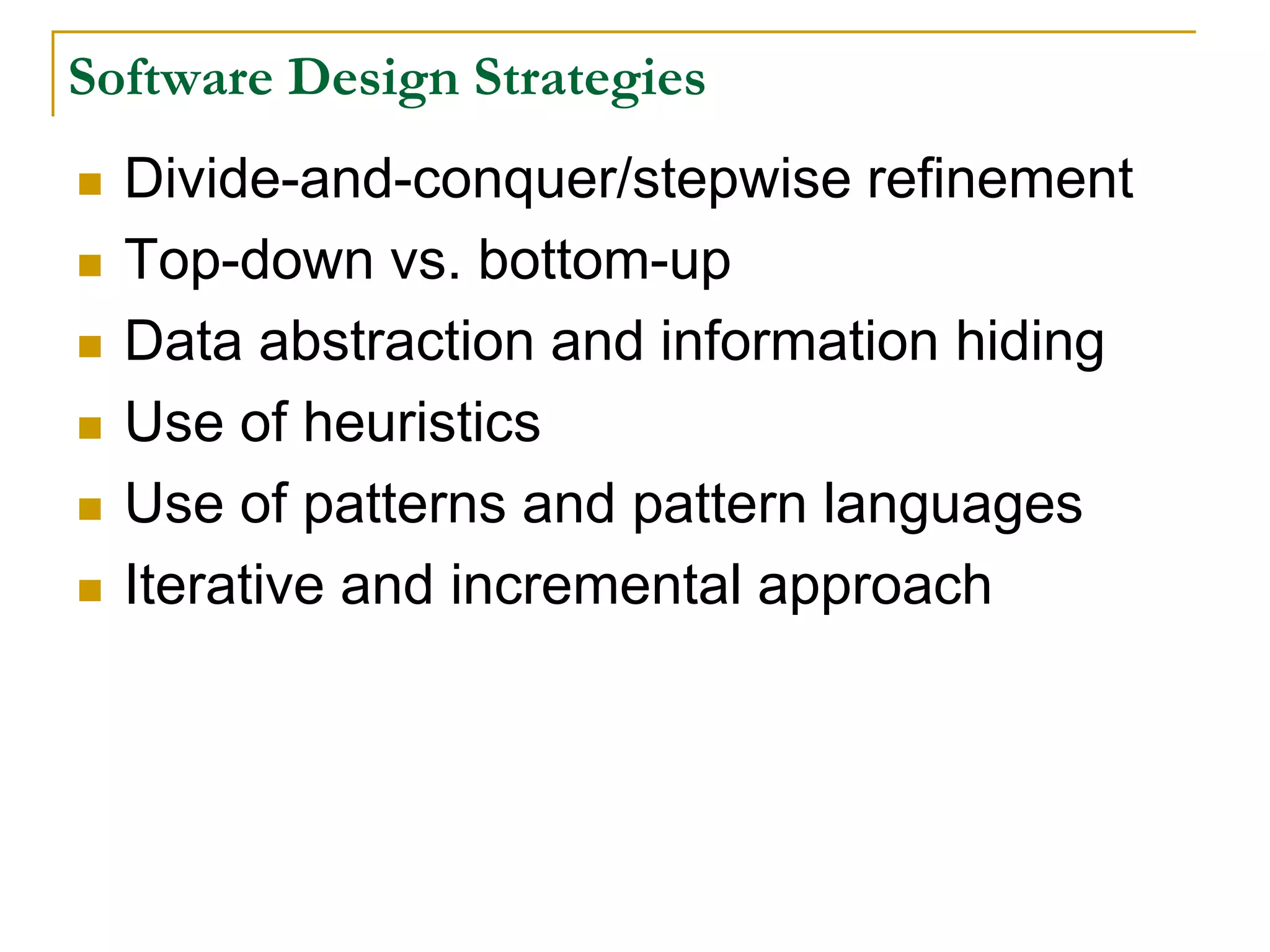The document discusses software design and the design process. It describes software design as a representation of a software product that can be traced to requirements and assessed for quality. Several viewpoints and representations are discussed for designing different aspects of software, such as the structural, functional, behavioral, and data modeling viewpoints. Common notations used in software design like data flow diagrams, statecharts, and entity relationship diagrams are also explained. The design process involves creating abstractions using viewpoints to describe a system from different perspectives in a manageable way.
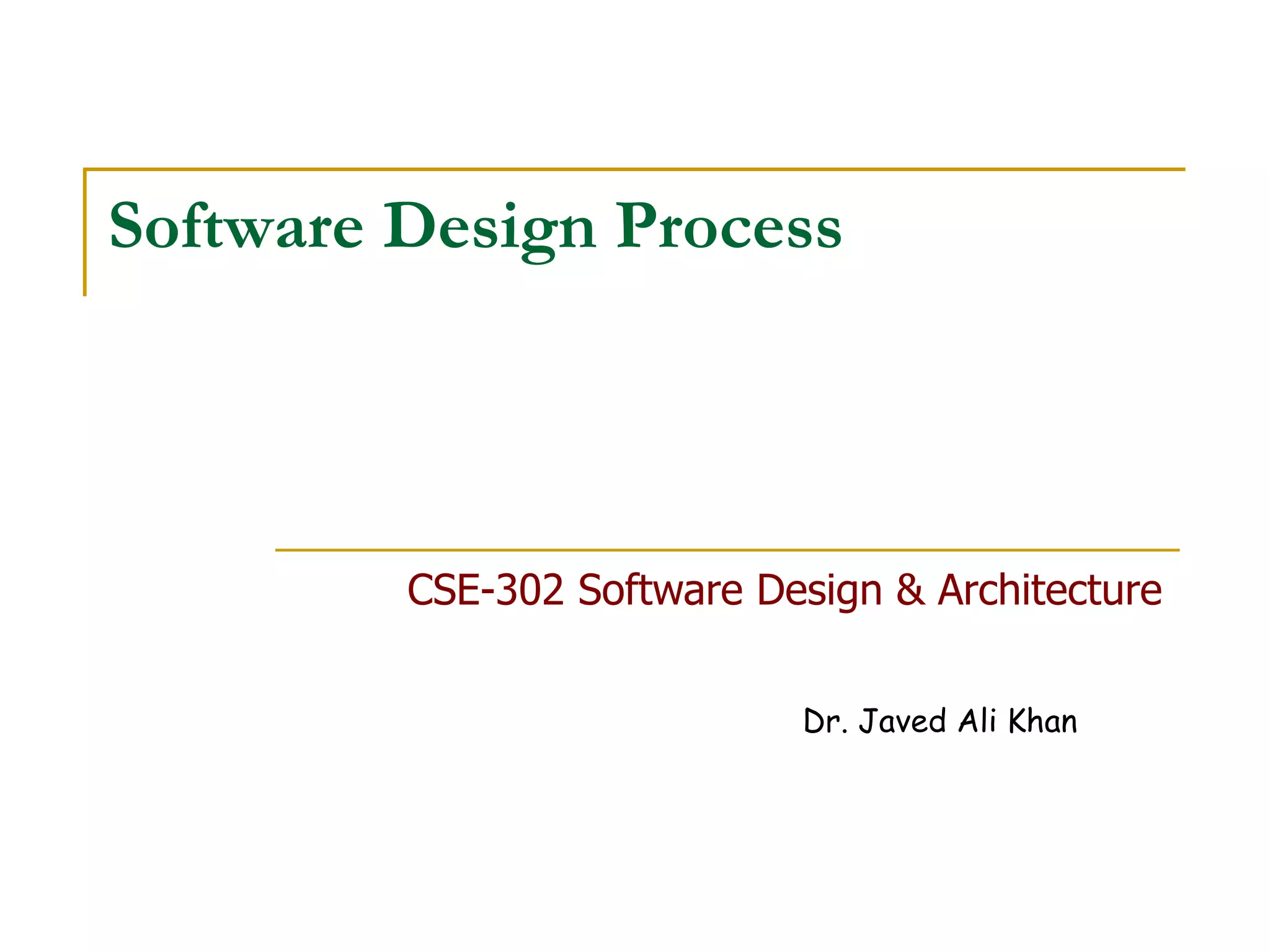
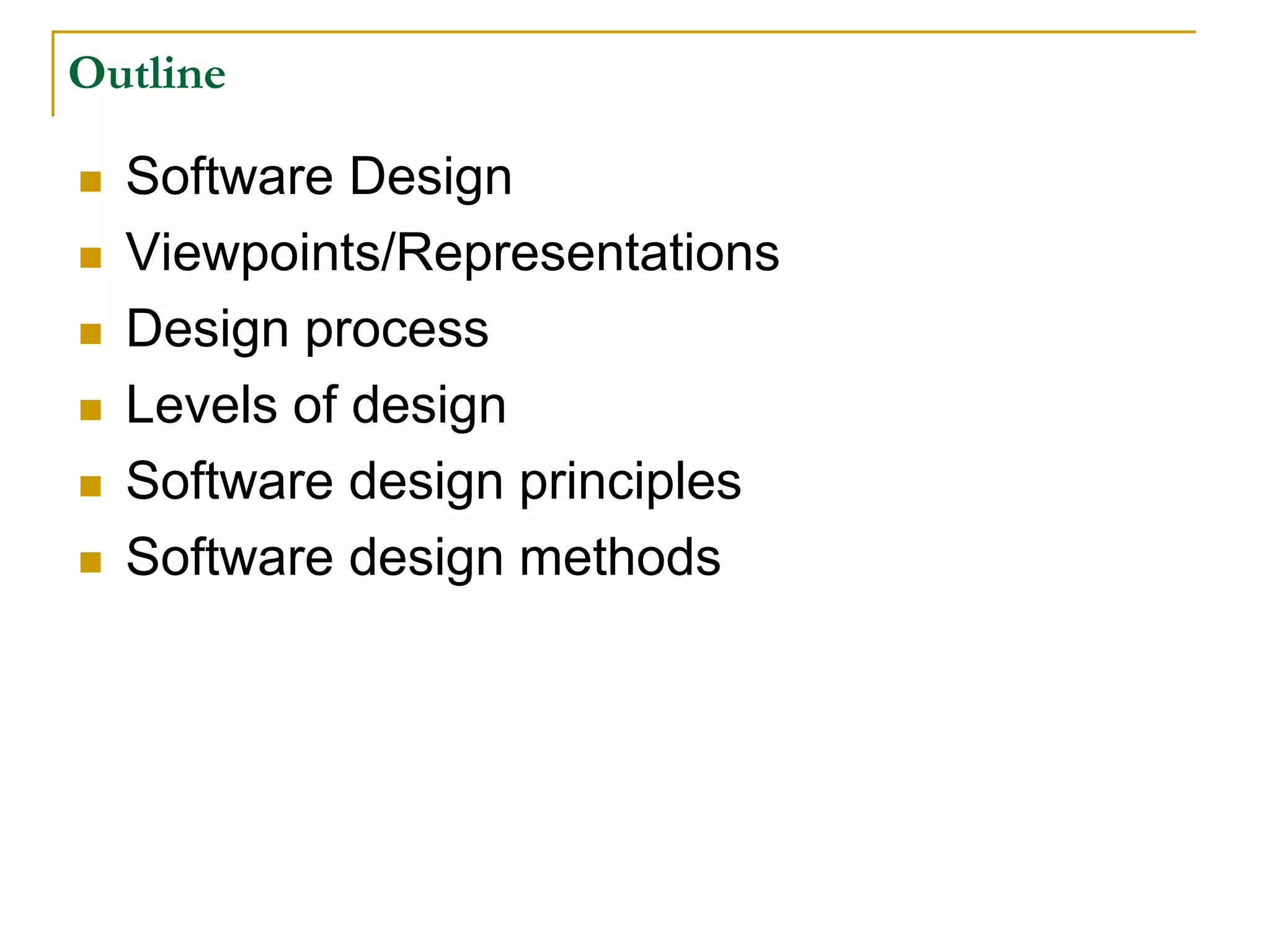
![Software Design
A software design is a meaningful engineering representation of
some software product that is to be built.
The process of applying various techniques and principles for the purpose of defining a device,
a process or a system in sufficient detail to permit its physical realization” [TAY59]
A design can be traced to the customer's requirements and can
be assessed for quality against predefined criteria.
It lays down the groundwork for achieving non-functional
requirements (performance, maintainability, reusability, etc.)
It takes target technology into account (e.g., kind of middleware,
database design, etc.)](https://image.slidesharecdn.com/1-architecturedesign2-230411183324-d514b34a/75/Software-Design-3-2048.jpg)
